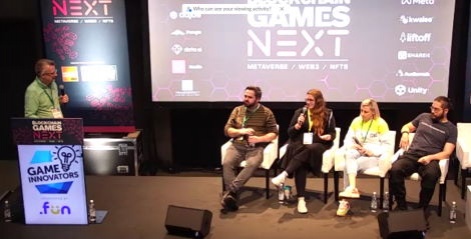Games are maybe the most fluid creative media. A game never has to be finished; it can keep changing and improving. In fact, many types of game need to change in order to keep players interested. But it’s a delicate process because dev time is expensive, and while new things are shiny, they can profoundly affect the balance of a game. And many players will instinctively rebel against anything you do to change the game they love!
In a conference session last week, our own Dave Bradley hosted one of the talks on the Game Innovation stage, and spoke to experienced developers from across the industry to reveal some strategies and tactics.
The five insiders spoke about pushing updates, player retention and KPI. Bradley put questions to Nick Murray, Design & Product consultant, Agnieszka "Aga" Besz, Design Manager with Decentraland, Samantha Keane, developer at Mag Interactive and Jan Litecky-Sveda, Lead Game Designer with Pixel Federation. Topics in the 40-minute session included how much does the player community have a say? What’s a fad, and what’s an improvement? And how do you roll back when you make a mistake?
Why do we Add New Features to our Games?
That was also one of the big questions to get the conversation started. “In the early days, we added features because they were cool,” answeredJan Litecky-Sveda. Now, listening to player feedback, retention and covering motivators that haven’t yet been included are key.
“One part, of course, is to make sure we add as many players as we want to the game, so we need to cover all the bases to make sure people join our game,” added Agnieszka Besz.

She continued that there’s no such thing as a ‘Perfect Feature’, but what’s important is to understand the core pillars of what you want to build, adding features to support this initial idea, “Keep the core of your game, what makes it good in the first place." Killing poorly received features quickly, playtesting and using systems such as a Prioritisation Matrix to track progress and important features were all agreed to be key.
Retention, Retention, Retention
One of the key discussion points was around player retention and, indeed, how to add new features in a way that was complimentary to the game.
Keep the core of your game, what makes it good in the first placeAga Besz, Decentraland
Being able to switch off features remotely without using updates may sound a bit Draconian, but it makes sense if you want to toggle off something new and possibly controversial without adding the extra inconvenience of an update.
However, overall the discussion agreed that innovation is essential. Making a game that's based on another popular one simply puts you in a contest with a developer that already has greater resources. Listening to player feedback can be good as long as you're prepared to hear "A thousand different answers, three of which are viable."
To attend future events like this, check out upcoming conferences at PGConnects.com. Would you like to take part on stage? Let us know about your expertise at our speaker submission form.






















